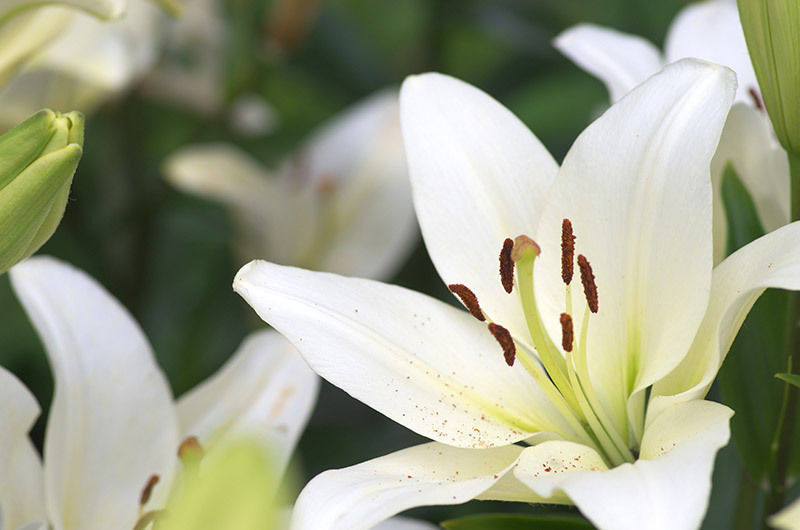The Love Story Between Valentine's Day and Red Roses
Valentine's Day and red roses--these two have become nearly synonymous throughout centuries. From romantic comedies to heartfelt love letters, the red rose holds a cherished place as the ultimate symbol of love, especially on February 14th. But how did this floral romance begin, and why do red roses signify love more than any other flower?
Tracing the Roots: The Origins of Valentine's Day
Valentine's Day has a fascinating history rich in myth, legend, and transformation. While it's now celebrated globally as a day for lovers, its origins trace back to ancient Rome:
- Lupercalia Festival: Celebrated in mid-February, this pagan festival heralded fertility and was dedicated to Faunus, the Roman god of agriculture.
- Saint Valentine: Later, the Christian church honored at least two martyrs named Valentine, both executed on February 14th. Eventually, this day became associated with romance, especially after stories emerged about one Valentine who performed secret marriages for young lovers.
- Medieval Europe: The notion of courtly love flourished, and Valentine's Day became linked to passion and poetic devotion.
Over centuries, these influences fused into the modern celebration, but it was the red rose that emerged as the flower of romance.
Red Roses: Symbolism Through the Ages
When considering the connection between Valentine's Day and red roses, it is essential to understand the deep cultural and historic symbolism attached to the red rose.
- Ancient Greece and Rome: The red rose was sacred to Aphrodite (Venus to the Romans), the goddess of love. Myths tell of roses springing from her tears and the blood of her lover Adonis.
- The Renaissance: Artists and poets spun the red rose into countless metaphors for beauty, passion, and, ultimately, romantic love.
- Victorian England: The language of flowers, or "floriography," flourished. Red roses became a secret code for "I love you."
Red roses and love grew intertwined through folklore, art, and literature, eventually reaching the crescendo we see on Valentine's Day.

Why Red Roses Became the Emblem of Valentine's Day
The Red Rose: Anatomy of a Love Symbol
The red rose is not simply a beautiful bloom--it is an enduring icon for several reasons:
- Color Psychology: Red evokes passion, desire, and intensity--emotions at the heart of romantic love.
- Elegance and Fragrance: The lush, velvety petals and signature scent of the red rose stir the senses and "speak" of devotion.
- Literary Allusions: From Shakespeare to contemporary writers, red roses have featured as metaphors for both love's ecstasies and heartbreaks.
On Valentine's Day, gifts of red roses are not just presents; they're confessions of affection, passion, and loyalty.
Global Traditions: How Cultures Celebrate Valentine's with Red Roses
While the tradition of gifting red roses is most prominent in Western countries, their allure has crossed borders:
- United States: Florists report their highest sales of red roses every February, with millions presented to spouses, sweethearts, and even friends.
- Japan: Women gift chocolates, but flowers--especially red roses--are gaining popularity as declarations of affection.
- France and Italy: Known for their romantic cultures, couples exchange single long-stemmed red roses, often accompanied by love poems.
- India: In growing urban centers, red roses symbolize a more modern embrace of love and courtship.
Wherever the tradition, the red rose is the universal language of love, transcending words and cultural differences.
Science Behind the Symbol: Why Red Roses Are Chosen for Love
Is there a biological or psychological reason why the red rose reigns supreme as the flower of Valentine's Day and love? Science offers several fascinating insights:
- Color Red and Attraction: Studies show that red increases perceived attractiveness and romantic interest. It may be an evolutionary signal of vitality and fertility.
- Fragrance and Emotional Response: The distinctive scent of roses can elevate mood and trigger memories tied to affection and positive experiences.
- Visual Impact: The lush layering of petals and striking red hues make roses visually irresistible, symbolizing abundance in love.
These factors, combined with centuries of tradition, ensure that red roses remain the original love flower for Valentine's Day.
The Modern Valentine's Day Rose
Today, Valentine's Day roses come in various forms:
- Classic bouquets of a dozen long-stemmed red roses
- Single roses presented as intimate gestures
- Mixed arrangements highlighting the red rose's prominence among other flowers
Flower shops and online retailers often craft creative bouquets, but at the center there is nearly always one steadfast bloom--the red rose.
Beyond Romance: The Wider Meaning of Red Roses on Valentine's Day
Red Roses and Different Kinds of Love
While red roses on Valentine's Day are primarily associated with passionate love, their significance can be broader:
- Friendship: Some choose to present red roses to close friends to celebrate the love of platonic relationships.
- Family: Children may give red roses to mothers, siblings, or relatives to share affection.
- Self-love: The practice of gifting oneself a red rose as an act of self-appreciation is becoming more popular.
Thus, the symbolism of Valentine's Day and red roses extends to all forms of heartfelt connection.
Conservation and Ethical Sourcing of Valentine's Roses
The huge demand for red roses around Valentine's Day brings into focus questions of sustainability and ethics:
- Eco-friendly Florists: Many are turning to florists that guarantee sustainably grown roses, reducing environmental impact.
- Fair Trade: Ethical sourcing ensures that flower farm workers, especially in developing countries, are paid fairly and work in safe conditions.
- Long-lasting Alternatives: Some opt for preserved or artificial roses to minimize waste and enjoy the symbol of romance for a longer period.
By choosing responsibly, couples and individuals can ensure their Valentine's Day red roses are meaningful in every sense.
Fun Facts and Cultural Curiosities About Red Roses on Valentine's Day
To enrich your understanding, here are some intriguing tidbits about the Valentine's Day red rose tradition:
- More Than a Billion: Each year, over one billion red roses are exchanged globally for Valentine's Day.
- Timing is Everything: Most red roses sold on this day are grown in South America, especially Colombia and Ecuador, requiring careful timing for freshness.
- Language of the Rose: The number of red roses can have symbolic meanings. A single rose often means "love at first sight," while a dozen signifies "perfect love."
- Records: The world's largest bouquet of red roses consisted of over 100,000 stems, assembled for a Valentine's Day celebration.
Beyond Red: The Meaning of Rose Colors on Valentine's Day
Though red roses take center stage, other rose colors are also popular on Valentine's Day:
- Pink Roses: Symbolize admiration, joy, and gratitude--ideal for new relationships or appreciation.
- White Roses: Represent purity and new beginnings, often gifted by those celebrating young love.
- Yellow Roses: Express friendship and happiness, making them a wonderful option for platonic love.
- Mixed Bouquets: Signify the complexity and depth of true love.
Nevertheless, the timeless allure of the red rose ensures its primacy on this romantic day.

Creative Ways to Share Red Roses on Valentine's Day
Looking for inspiration? Here are some unique ideas for incorporating red roses into your Valentine's Day celebration:
- Red Rose Petal Path: Sprinkle petals leading to a surprise dinner, gift, or love note.
- Personalized Messages: Attach handwritten messages or poems to the stems for a heartfelt touch.
- DIY Rose Gifts: Make rose-infused chocolates, bath products, or scented candles as a romantic gesture.
- Red Rose-Themed Date: Visit a botanical garden or create a rose-themed picnic.
The possibilities are endless, ensuring your gift of Valentine's Day red roses stands out and creates cherished memories.
The Enduring Love Affair: Red Roses and Valentine's Day in the Modern World
The love story between Valentine's Day and red roses continues to grow with each generation. Technology, globalization, and changing attitudes toward love have only deepened our fascination with this floral symbol.
- Online Gifting: Flower delivery apps make it easier than ever to send fresh roses to lovers across the globe.
- Virtual Celebrations: Even apart, couples exchange digital images of red roses and romantic messages via social media and messaging platforms.
- Cultural Hybridization: East meets West as new customs blend, with red rose exchanges now common in many countries where they weren't before.
The red rose's power endures because it reflects deep-seated human emotions--desire, affection, longing, and devotion.
Conclusion: The Eternal Flame of Red Roses on Valentine's Day
As we've journeyed through history, symbolism, culture, and science, one thing is clear: The love story between Valentine's Day and red roses is not just tradition--it's an epic poem written by lovers across centuries and continents. Whether a single rose or a lavish bouquet, these blooms encapsulate the spirit of romance in a simple, eloquent gesture.
No matter how trends or fashions change, the red rose will forever occupy the throne as the queen of Valentine's Day, eloquently speaking the words "I love you" when our voices are not enough.
So, this February 14th, when you hold a red rose or receive one, remember--the story it tells has been growing for thousands of years, entwined with every heartbeat in love's timeless dance.

